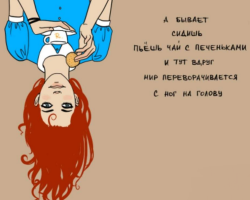How to write a business letter that will not be lost in “information garbage” and will be read? Rules, recommendations, examples
Content
- How does the official letter differ from the usual one? The specifics of the business letter
- What types of business writing exist?
- Business writing structure: introduction, main part, conclusion
- How not to make a mistake in choosing a letter style?
- What is a letter-pest and how to write it? How does it differ from other types of letters?
- What is a letter-off and how to write it?
- Information letter: its difference from writing and writing writings
- How can you not write business letters? Typical examples of errors
- What else do you need to know about business letters?
- How to write business letters correctly: tips and reviews
- Video: How to write is clear and human? Tips from Sasha Karepina
- Video: how to write accompanying letters and resumes
- Video: "Learning from fairy tales." Secrets of selling texts
The word is an affordable business tool. In the business world, it is impossible to find a person who would not use the word in his work.
Modern business is gradually turning into a business in correspondence. With the help of letters - electronic or traditional - communication with customers, business partners, employers takes place. The letter positions the author either as a professional, or as a person with whom it is not worth continuing the relationship.
A professional must be able to write
- clear
- immediately
- earnestly
- interesting
And it will never be too late to learn this. We start with the basics: we comprehend the difference between business and ordinary writing.

How does the official letter differ from the usual one? The specifics of the business letter
A letter is a short text in one or two page, the purpose of which is to convey to the addressee information regarding something.
The nature of the information and the relationship between the sender and the recipient of the letter divide the correspondence into
- business (formal)
- personal (informal)

A business letter is characterized by:
- laconicism
- accuracy
- argumentation and logic
- information
- evaluative and emotional neutrality
- standardization:
- official forms are used
- sustainable speeches of speech, special office terms and constructions are used
- number of topics-1-2
- targeted
- clearly pronounced subordination (if necessary)
What types of business writing exist?
The type of business letter determines
1. The purpose of its spelling
Commercial goals
- You want to make a deal and offer its specific conditions-make a letter-offer (offer) for the addressee

- If you have not decided on the conditions of the transaction acceptable for you, send a letter
- Want to inform your addressee of violation of obligations under the contract on his part? Make a spell letter (complaint)
Non -profit goals
- Thank you in a grateful letter
- Confirm your obligations with a warranty letter, and your consent with a letter-confirmation
- Write information letters if you think that your information will be interesting to the addressee
- Recall important agreements, obligations, penalties with letters-recharge
- Congratulations in letters, ask for letters, condolences in letters-sores
- If you need to send important documents or material values, be sure to make a cover letter for your cargo

2. Recipient
If you address the letter to several recipients at once, then you make a circular letter
3. Content
Your letter can affect several topics at the same time that automatically makes it multi -versed
4. Structure
Regulated letters suggest the preparation of the text part of the letter according to a certain model, and the ungrounded are of free presentation
5. Form of departure

- in the envelope
- electronic
- by fax
Business writing structure: introduction, main part, conclusion
The structure of standard business writing requires more thorough consideration.
The correctly executed letter must correspond to the following scheme:
 Let us consider in more detail some points of the scheme:
Let us consider in more detail some points of the scheme:
1. Title
As a rule, this is a brief presentation of the topic of writing.
IMPORTANT: Make the headline correctly if you want the addressee to read your letter.
The absence of headings in business correspondence is characteristic of beginners who do not have elementary business correspondence skills.
2. Appeal
- has a traditional form "dear"
- written with a capital letter in the middle of the line

Important: the use of abbreviations in circulation is prohibited!
3. Presambula
- introduces the addressee to the main idea of \u200b\u200bthe letter
- prepares the addressee for the correct perception of subsequent information set forth in the letter


4. The main part of the text substantiates the key idea set forth in the preamble
In this part of the letter
- you clearly indicate the essence of the sentence/circulation
- give the arguments: facts, numbers, other specifics on the topic of the letter. Expert opinion, own positive/negative experience
For the convenience of justification, the following scheme can be used:

Important: the last paragraph must contain a phrase indicating a specific step or expected result and encourage the addressee to action
5. In conclusion:

6. In the “Signature” window, information about the addressee must indicate:
- job title
- Full name
How not to make a mistake in choosing a letter style?
In business correspondence, you constantly have to make a choice regarding the style of writing and the tone of communication with the addressee. How dry, formal official or, conversely, living, warm, human should your message be?

- Personal style in business correspondence emphasizes the individual qualities of a person who wrote a letter
- When using a formal style, facts are presented and on their basis the corresponding conclusions are drawn
- Personal style involves the communication of the author of the letter and the addressee on an equal footing
- The formal style demonstrates a clear subordination and force with which the reader of the letter is forced to reckon

In order to choose the right style of communication in a business letter, think:
- in what weight categories are you and your addressee
- you want to agree in a good way or put a pace
How to adhere to the chosen style?

Personal style
- The presence of personal pronouns: I, we, you
For example: I apologize to you and sincerely hope that such mistakes will no longer be repeated - Direct appeals and requests
For example: please, do not leave your personal things unattended - Using emotional evaluative expressions: star youth, deafening failure
Formal style
- Replacing personal pronouns abstract nouns
For example: the administration of the cinema brings its sincere apologies for changing the schedule of evening sessions - Replacing personal appeals and requests by statements
For example: please do not leave personal items unattended - Using generally accepted chancellery: I bring it to your knowledge, due to the fact that
Formal style is categorically not suitable if you compose a letter-bastard or a letter-male letter, that is, those business letters in which feelings must be expressed. In a situation where you write a letter-question or letter-offer to adhere to a personal style better.
What is a letter-pest and how to write it? How does it differ from other types of letters?

Important: when drawing up a letter, focus the addressee's attention on exactly what actions you expect from him. Also indicate specific terms for the implementation of the tasks you set.
The template template will help to make it correctly:

What is a letter-off and how to write it?

There are two types of letters-wools:
- letter-Otkaz
- a letter with a positive answer
The preparation of both types of letters has two general rules (provided that the initiative letter was drawn up correctly):
1. The vocabulary and speech turnover of the initiative letter are preserved in the letter-offset
2. In the text of the letter-answer, there should not be information about
- the date of compilation of the initiative letter
- its registration issue
An example of a benevolent and correct letter from the Formation is given below:

However, the refusal should not always be soft. There are situations when a strict and strict style of communication is needed. Below is a template for letters-honey for all occasions: from hard to soft:

Information letter: its difference from writing and writing writings

The information letter is multifunctional:
- reports (for example, about changing prices in price lists)
- informs (on re -election of members of the board of directors)
- notifies (about the shipment of goods)
- declares (about intentions)
- confirms (receipt of goods)
- reminds (about fulfilling the obligations undertaken under the contract)
- advertises and informs (about the company in general, about goods / service in particular)
Perhaps the most pressing issue today is the question of how to correctly compile an advertising and information letter.
The plan of the selling letter is presented in the scheme:

When compiling a letter, be sure to use the following points:
- Promise
- Justification
- The price of the issue
- Call to action
The finished letter may look as follows:

How can you not write business letters? Typical examples of errors

1. Lack of structure
2. The presence in the text of the letter of slang or informal vocabulary
3. Inaccurate design
4. abundance of spelling, syntactic, stylistic errors
5. The absence in the letter of reliable facts, objective information
6. Violation of the elementary rules of politeness (especially in letters-pretens)
7. The use of bulky and incomprehensible offers in the text
8. Lack of logic in the presentation of the material
9. Lack of decoding abbreviations
10. General blurring of the text in case of its aimless compilation
What else do you need to know about business letters?
1. For modern business correspondence, the method of the block structure of the text is used.
This method saves time and supports the general style of all business documentation. A characteristic feature of the method is an open punctuation or the absence of points/commas (for example, when decorating lists)
2. For a letter title, a font can be used without cuttings (for example, Arial). Such a font at a subconscious level is perceived as stable and thorough

3. In the main text, fonts with cuttings (Times News Roman) should be used. Thanks to the serifs, the eyes move easier from the letter to the letter, which makes the reading process faster
Important: there are letters that are always written only by hand!
These are letters of the congratulations, letters-sample, letters-bloominess
How to write business letters correctly: tips and reviews
A large amount of useful information regarding the preparation of texts of business letters can be found in the video from Sasha Karepina.






